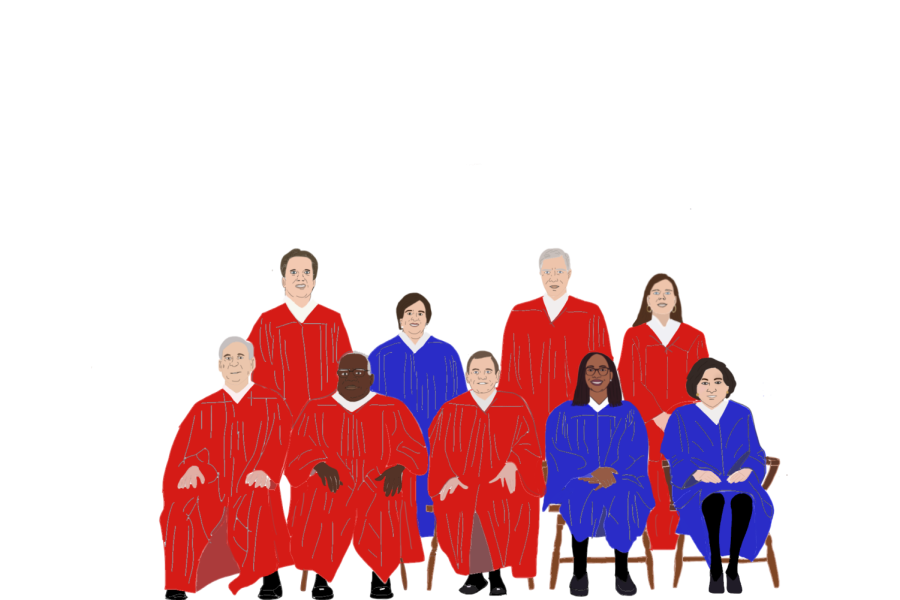Roe v. Wade
Over the summer, the US Supreme Court struck down on the historic Roe v. Wade court case reversing nearly half a century of precedent.
A timeline of abortion in America:
1821: Connecticut passes the first law in the United States to restrict abortion. It prohibits the use of poison to cause a miscarriage after “quickening” (when a pregnant person starts to feel their baby move in the womb).
October 12, 1869: Pope Pius IX, in the document Apostolicae Sedis, gives the view that all abortion is homicide and endorses “ensoulment at conception” (the idea that life begins at conception).
November 10, 1921: Margaret Sanger establishes the American Birth Control League (which would later become the Planned Parenthood Federation of America in 1942).
June 7, 1965: In Griswold v. Connecticut, the Supreme Court strikes down a Connecticut law and rules in a 7-2 decision that the Constitution protects the right of married couples to use contraception.
March 13, 1970: Hawaii becomes the first state to legalize abortion.
March 22, 1972: In Eisenstadt v. Baird, the Supreme Court strikes down a Massachusetts law and rules in a 6-1 decision that unmarried adults can use contraception.
January 22, 1973: In Roe v. Wade, the Supreme Court issues a 7-2 decision that women have a constitutional right to an abortion, dependent on the trimester, under the 14th Amendment.
January 22, 1974: The first “March for Life” is held in Washington, D.C.
September 30, 1976: The Hyde Amendment passes, which prohibits government funds from being spent on abortion services except for incest, rape or life-threatening situations.
June 15, 1983: In Akron v. Akron Center for Reproductive Health, the Supreme Court rules 6-3 that certain Ohio legislation is unconstitutional. These laws include a requirement that all abortions after the first trimester be performed at a hospital, a 24-hour waiting period and parental consent for unmarried minors.
June 29, 1992: In Planned Parenthood of Southeastern Pennsylvania v. Casey, the Supreme Court rules 5-4 that all Pennyslviana abortion restrictions are constitutional except for the husband-notification requirement. The Court declares states can pass abortion restrictions as long as they do not pose an “undue burden.”
November 5, 2003: President George W. Bush signs the Partial-Birth Abortion Ban Act into law, which prohibits a form of late termination of pregnancy called “partial-birth abortion.”
April 18, 2007: In Gonzales v. Carhart, the Supreme Court upholds, in a 5-4 decision, the federal ban on partial-birth abortions, as they find it not unconstitutionally vague and did not impose an undue burden on the right to an abortion.
June 27, 2016: In Whole Woman’s Health v. Hellerstedt, the Suprme Court, in a 5-3 decision, strikes down Texas provisions related to abortion, such as admitting-privileges and surgical-center requirements, because they impose an undue burden on a woman’s right to an abortion.
June 29, 2020: In June Medical Services v. Russo, the Supreme Court rules 5-4 that Louisiana’s law of placing hospital-admission requirements on abortion clinics doctors was unconstitutional.
June 24, 2022: In Dobbs v. Jackson Women’s Health Organization, the Supreme Court rules that the right to an abortion is not protected by the Constitution, therefore Roe v. Wade and Planned Parenthood of Southeastern Pennsylvania v. Casey is overruled. The Court rules 6-3 to uphold Mississippi’s abortion law, and overturns Roe v. Wade and Planned Parenthood of Southeastern Pennsylvania v. Casey in a 5-4 vote.
What now?
A new Missouri trigger law became effective June 24, completely banning abortions within the state, lacking exceptions for rape and incest. This law makes terminating a pregnancy illegal, except in the case of a medical emergency where the child-bearer’s life or health is severely threatened. Providing an abortion is considered a Class B felony, along with other crimes such as voluntary manslaugher, first degree domestic assault and second degree drug-trafficing, resulting in five to 15 years in prison.
Missouri’s final abortion provider, Reproductive Health Services of Planned Parenthood in St. Louis, annouced it would cease offering abortions. Missouri, having less than 200 abortions in 2021, is one of eight states to immediately ban abortion after the Supreme Court’s decision. People seeking abortions in states with similar bans, including Alabama, Arkansas, Mississippi, Oklahoma, South Dakota, Texas and Wisconsin, will have to travel outside of their state to neighboring states where abortion is still allowed. Illinois is landlocked and has turned into, as the New York Times says, an “island of abortion access” for many of its Republican neighbors. The problem is as other states clinics close the providers may not be able to keep up with the rush and demand coming from other states. In addition, waiting periods pose a financial strain on low income parents traveling for abortions.
Your donation will support the student journalists of Kirkwood High School. Your contribution will allow us to purchase equipment and cover our annual website hosting costs.

She/Her
Hobbies and Interests: volleyball, watching sports, traveling, listening to music and hanging out with friends
Favorite song: Callin Baton...

She/Her
Hobbies and Interests: music, writing, traveling, and spending time with my friends
Favorite song: She by Harry Styles
Favorite Quote:...

She/Her
Hobbies and Interests: dancing, reading, shopping, fashion, writing
Favorite song: All Too Well by Taylor Swift
Favorite Quote: "I like...

She/Her
Hobbies and Interests: guitar, lacrosse, hanging with friends
Favorite song: When It Rains It Pours by Luke Combs
Favorite Quote: "The...








